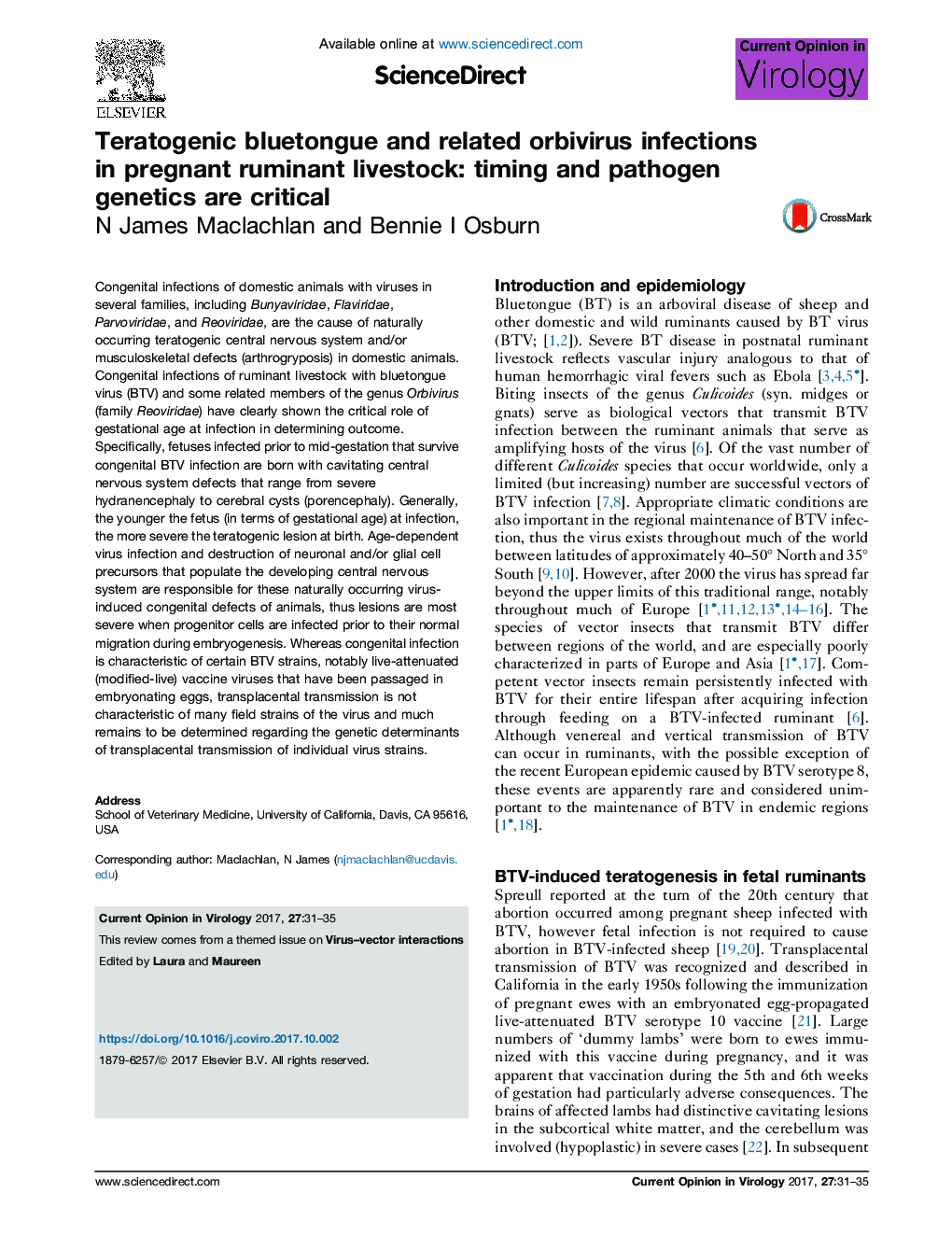| Article ID | Journal | Published Year | Pages | File Type |
|---|---|---|---|---|
| 8506621 | Current Opinion in Virology | 2017 | 5 Pages |
Abstract
Congenital infections of domestic animals with viruses in several families, including Bunyaviridae, Flaviridae, Parvoviridae, and Reoviridae, are the cause of naturally occurring teratogenic central nervous system and/or musculoskeletal defects (arthrogryposis) in domestic animals. Congenital infections of ruminant livestock with bluetongue virus (BTV) and some related members of the genus Orbivirus (family Reoviridae) have clearly shown the critical role of gestational age at infection in determining outcome. Specifically, fetuses infected prior to mid-gestation that survive congenital BTV infection are born with cavitating central nervous system defects that range from severe hydranencephaly to cerebral cysts (porencephaly). Generally, the younger the fetus (in terms of gestational age) at infection, the more severe the teratogenic lesion at birth. Age-dependent virus infection and destruction of neuronal and/or glial cell precursors that populate the developing central nervous system are responsible for these naturally occurring virus-induced congenital defects of animals, thus lesions are most severe when progenitor cells are infected prior to their normal migration during embryogenesis. Whereas congenital infection is characteristic of certain BTV strains, notably live-attenuated (modified-live) vaccine viruses that have been passaged in embryonating eggs, transplacental transmission is not characteristic of many field strains of the virus and much remains to be determined regarding the genetic determinants of transplacental transmission of individual virus strains.
Related Topics
Life Sciences
Immunology and Microbiology
Virology
Authors
N James Maclachlan, Bennie I Osburn,
